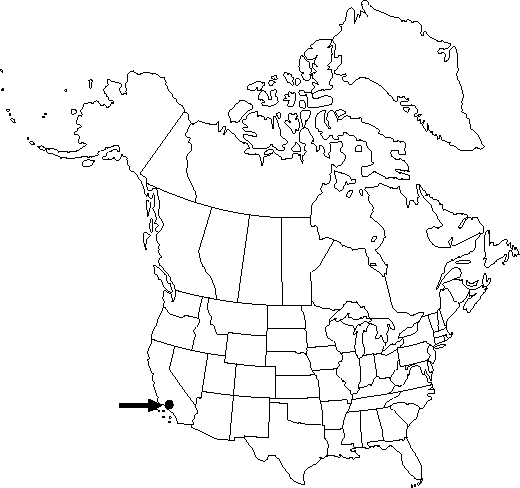Difference between revisions of "Delphinium parishii subsp. pallidum"
Phytologia 68: 2. 1990.
FNA>Volume Importer |
FNA>Volume Importer |
||
| Line 31: | Line 31: | ||
|elevation=900-1900 m | |elevation=900-1900 m | ||
|distribution=Calif. | |distribution=Calif. | ||
| − | |discussion=<p>Nowhere common, Delphinium parishii subsp. pallidum may be in danger of significant population reductions because of human encroachment.</p><!-- | + | |discussion=<p>Nowhere common, <i>Delphinium parishii </i>subsp.<i> pallidum</i> may be in danger of significant population reductions because of human encroachment.</p><!-- |
| − | --><p>Delphinium parishii subsp. pallidum hybridizes with D. parryi subsp. purpureum. It is frequently confused with D. inopinum. Most of the data attributed to D. inopinum in the paper by H. Lewis and C. Epling (1954) pertain to D. parishii subsp. pallidum. Refer to discussion under D. inopinum for features used to distinguish these two taxa. Plants of D. parishii subsp. pallidum might be confused with D. gypsophilum subsp. parviflorum. Distinguishing characteristics are found in discussion of that taxon.</p> | + | --><p><i>Delphinium parishii </i>subsp.<i> pallidum</i> hybridizes with <i>D. parryi </i>subsp.<i> purpureum</i>. It is frequently confused with <i>D. inopinum</i>. Most of the data attributed to <i>D. inopinum</i> in the paper by H. Lewis and C. Epling (1954) pertain to <i>D. parishii </i>subsp.<i> pallidum</i>. Refer to discussion under <i>D. inopinum</i> for features used to distinguish these two taxa. Plants of <i>D. parishii </i>subsp.<i> pallidum</i> might be confused with <i>D. gypsophilum </i>subsp.<i> parviflorum</i>. Distinguishing characteristics are found in discussion of that taxon.</p> |
|tables= | |tables= | ||
|references= | |references= | ||
| Line 56: | Line 56: | ||
|publication year=1990 | |publication year=1990 | ||
|special status=Endemic | |special status=Endemic | ||
| − | |source xml=https://jpend@bitbucket.org/aafc-mbb/fna-data-curation.git/src/ | + | |source xml=https://jpend@bitbucket.org/aafc-mbb/fna-data-curation.git/src/8f726806613d60c220dc4493de13607dd3150896/coarse_grained_fna_xml/V3/V3_121.xml |
|genus=Delphinium | |genus=Delphinium | ||
|section=Delphinium sect. Diedropetala | |section=Delphinium sect. Diedropetala | ||
Revision as of 18:14, 18 September 2019
Stems (27-)40-60(-95) cm. Leaves primarily on proximal 1/3 of stem; ultimate lobes 3-7, abruptly smaller with narrower lobes on distal portion of stem. Inflorescences: pedicel usually less than 15 mm, 4-17 mm apart. Flowers: sepals white to pink or blue, spreading to erect, lateral sepals 6-11 × 2-4 mm, spurs 7-13 mm; lower petal blades 3-4 mm. Fruits 11-14 mm. 2n = 16.
Phenology: Flowering spring–early summer.
Habitat: Artemisia scrub, open pine woods, chaparral
Elevation: 900-1900 m
Discussion
Nowhere common, Delphinium parishii subsp. pallidum may be in danger of significant population reductions because of human encroachment.
Delphinium parishii subsp. pallidum hybridizes with D. parryi subsp. purpureum. It is frequently confused with D. inopinum. Most of the data attributed to D. inopinum in the paper by H. Lewis and C. Epling (1954) pertain to D. parishii subsp. pallidum. Refer to discussion under D. inopinum for features used to distinguish these two taxa. Plants of D. parishii subsp. pallidum might be confused with D. gypsophilum subsp. parviflorum. Distinguishing characteristics are found in discussion of that taxon.
Selected References
None.
